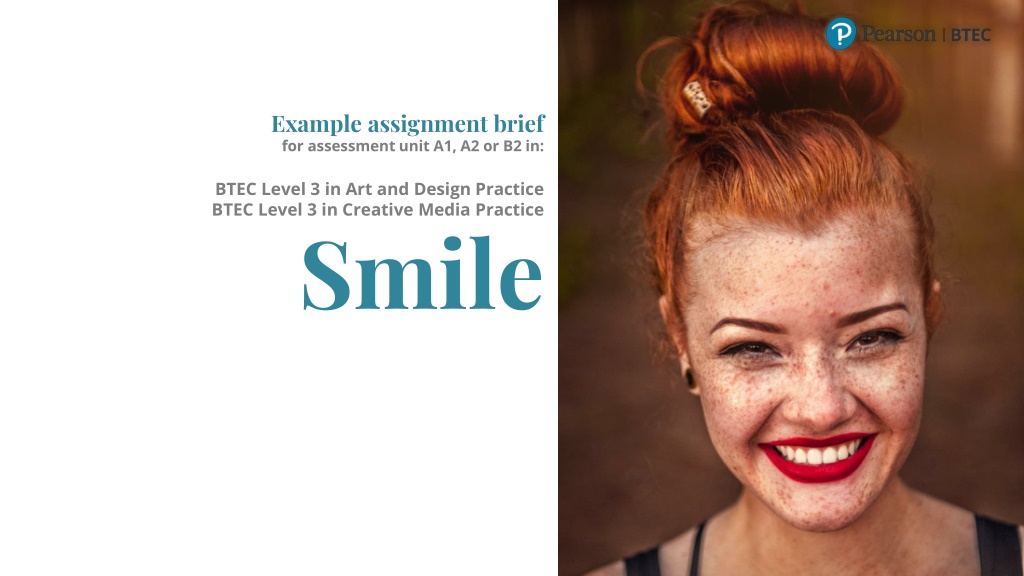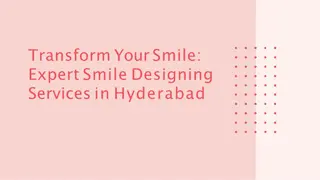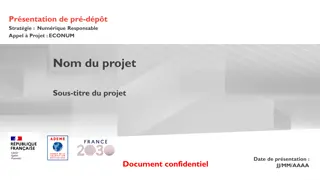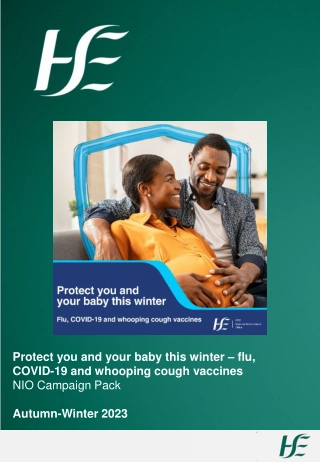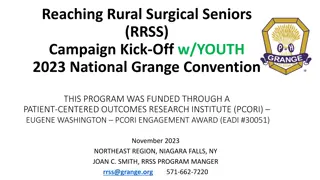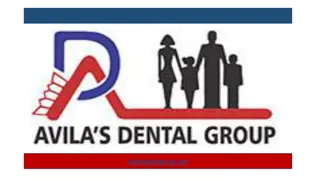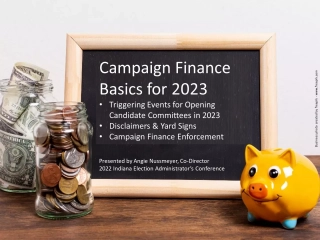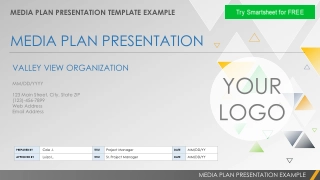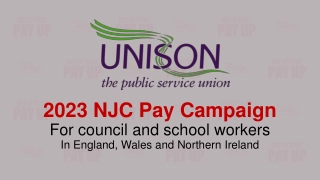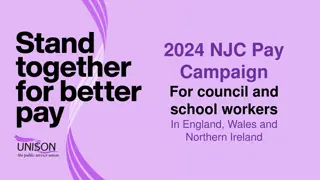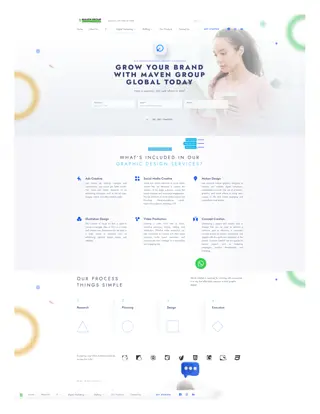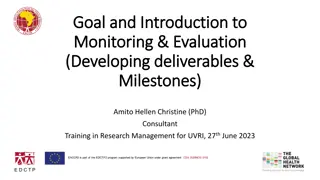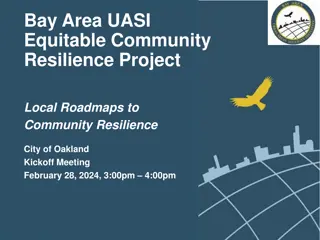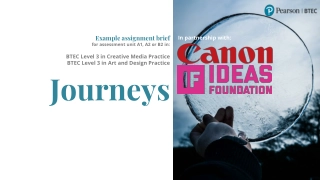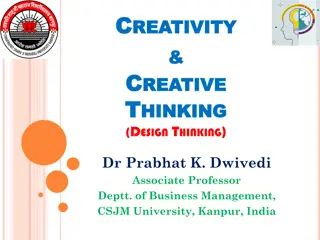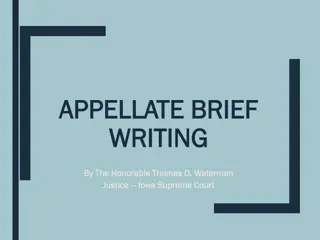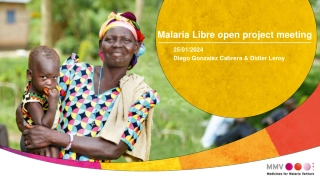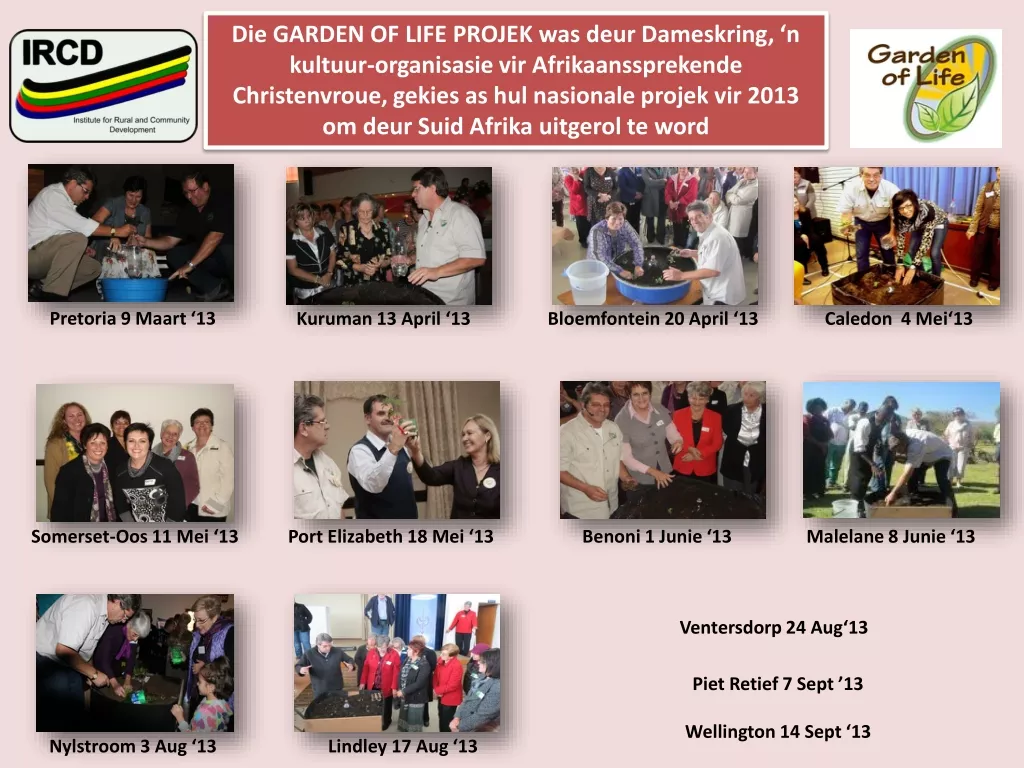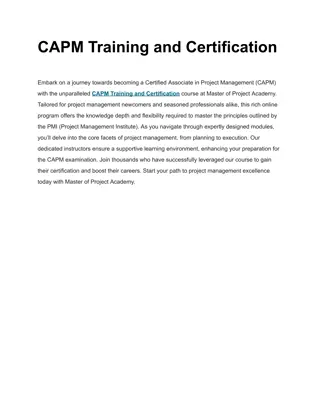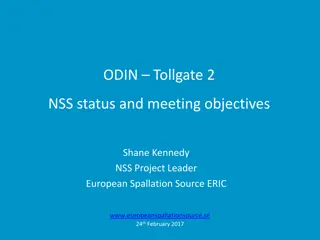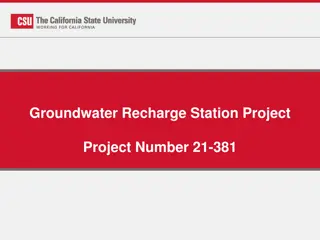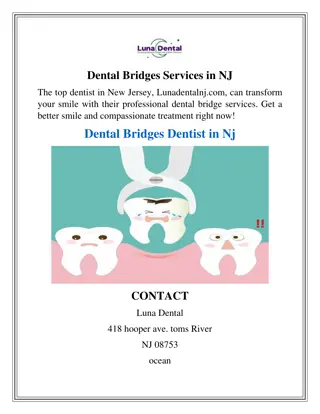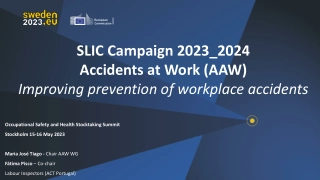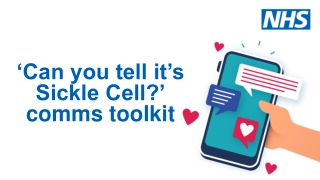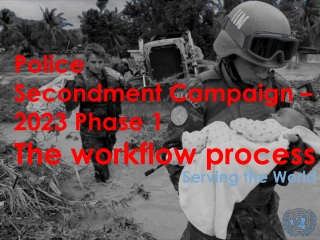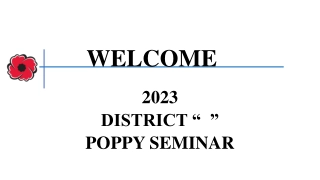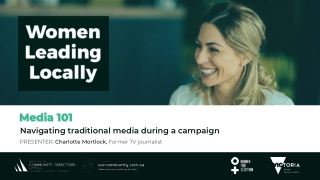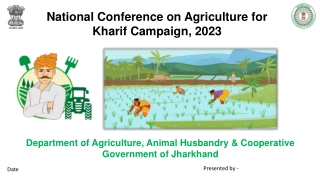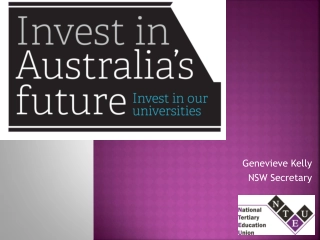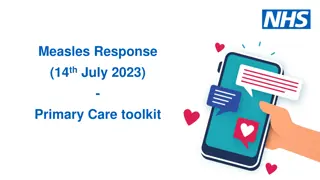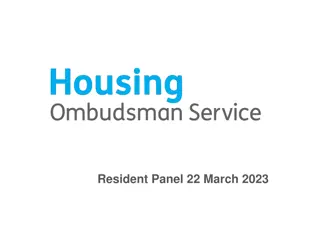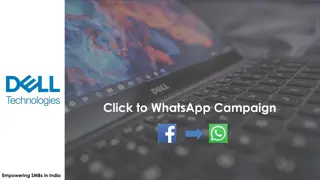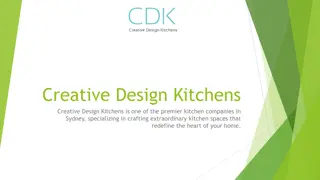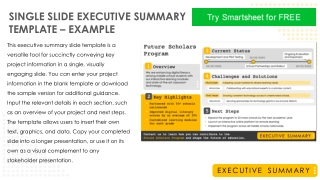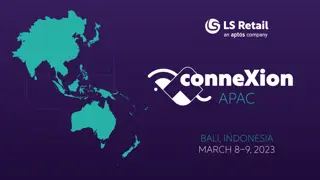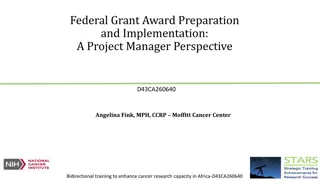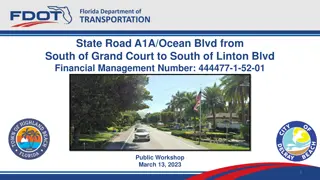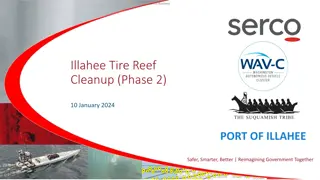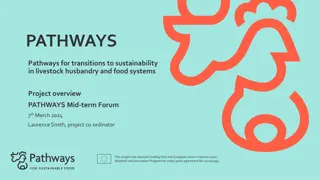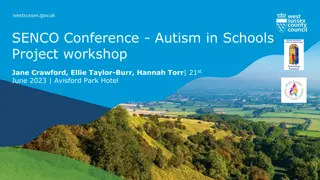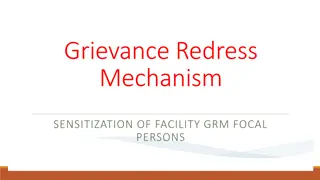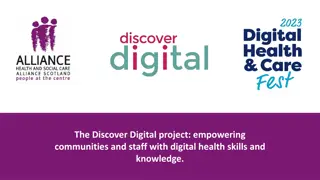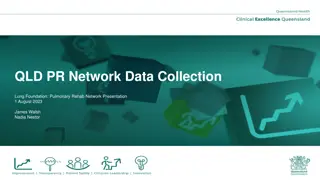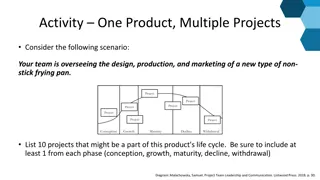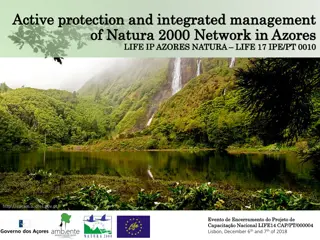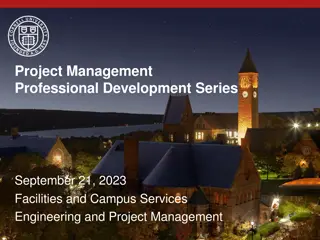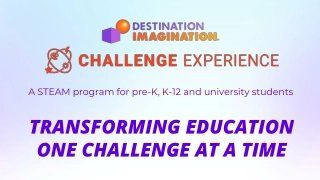Creative Project Brief for Smile Campaign
Create a creative outcome for the Smile project initiated by Happy Foundations, aimed at promoting positivity and reducing stress in communities through encouraging smiles. The assignment requires producing a project that will make people smile, with various options provided such as TV/radio ads, artworks, promotional materials, fashion garments, etc. Learners will need to seek approval from tutors before commencing work to ensure alignment with assessment criteria.
Creative Project Brief for Smile Campaign
PowerPoint presentation about 'Creative Project Brief for Smile Campaign'. This presentation describes the topic on Create a creative outcome for the Smile project initiated by Happy Foundations, aimed at promoting positivity and reducing stress in communities through encouraging smiles. The assignment requires producing a project that will make people smile, with various options provided such as TV/radio ads, artworks, promotional materials, fashion garments, etc. Learners will need to seek approval from tutors before commencing work to ensure alignment with assessment criteria.. Download this presentation absolutely free.
Presentation Transcript
Example assignment brief for assessment unit A1, A2 or B2 in: BTEC Level 3 in Art and Design Practice BTEC Level 3 in Creative Media Practice Smile
Smile Guidance for teachers on using example assignment briefs (delete slide prior to handing out to learners) While this assignment can be used for delivery within assessment unit A1, A2 or B2, learners must undertake different assignments for each assessment unit. The expectations in each assessment unit will also be different, for example: A1: the assignment would most likely be used to form part of the evidence for the unit, combined with evidence from other assignments. A2: as a unit dedicated to undertaking a focused creative project in response to an assignment brief, more time would be expected to be spent exploring different ideas, developing work and presenting outcomes to meet the brief. B2: the response itself is likely to be more extensive and fully resolved given the time allocated to the development of work towards the assignment and the depth of content being assessed through this unit Example Assignment Briefs (EABs) are provided for use and guidance. They have been developed to provide realistic vocational scenarios as client briefs. The content demonstrates how briefs can be used for assignments for all or part of assessment units. You should ensure the following sections of this assignment brief are appropriate for your programme and learners, and adapt as necessary e.g.: EABs can be adapted in any way to meet the needs of your learners and programme, however they must maintain the required features of an assignment for a BTEC qualification. Please see the Delivery Guide for this qualification for more information on setting and adapting assignments. Requirements: to indicate the types of media and outcomes. Requirements detail: to indicate the specific requirements for focused programmes, i.e. if the programme is fashion or games orientated, it would be advisable to set narrower outcome requirements. Inspiration: to use examples of sources relevant to the programme. Guidance: to indicate the specific expectations of how learners will develop and submit work. Additional deadlines can be included for different tasks within the assignment if needed.
Smile Client Happy Foundations Brief Context Happy foundations is a movement of people trying to build a happier society by encouraging positive changes in peoples personal lives, homes, workplace and communities. Requirements Produce a creative outcome that will make people smile. Audience The primary target audience is your own community and the aim in to motivate members of the community to smile to reduce stress and help improve mental health. Deadline To be completed by assessor. Resubmission deadline To be completed by assessor. Assessor To be completed by assessor.
Smile Happy Foundations: The smile project Requirements detail: Simply Smiling Can Actually Reduce Stress A new study indicates that the mere act of smiling can help us deal with stressful situations more easily. You have been asked to produce a creative outcome that will encourage those who experience it to smile. Some starting points might include: a TV or radio advert. piece of artwork for an exhibition advertising or promotional material interactive product commercial design/product functional object fashion garment or accessory Note: you should agree your plans with your tutor to ensure they meet the assessment criteria before you begin working.
Smile Client background Use your smile to change the world, don t let the world change your smile. Our philosophy When our smiling muscles contract, they fire a signal back to the brain, stimulating our reward system, and further increasing our level of happy hormones, or endorphins. In short, when our brain feels happy, we smile; when we smile, our brain feels happier. Fake it till you make it! Yes, if you want to be happy, just smile. Thanks to the positive feedback loop of smiling, we can alter our brain's emotional processing pathway to feel happier with a simple smile. Focus Happy foundations is a not-for-profit organisation and is committed to support a range of initiatives that will help to build a happier society.
Inspiration: Smile The annual Gallup Global Emotions Report has new evidence to indicate that people around the world are becoming more angry, stressed and worried.. Of some 150,000 people interviewed in over 140 countries, a third said they suffered stress, while at least one in five experienced sadness or anger. Left unchecked this can contribute to many health problems, such as high blood pressure, heart disease, obesity, diabetes and mental health disorders.
Guidance overview Smile You will need to plan and organise your project individually as part of your professional practice and problem solving. AC1: Informing ideas Use skills for informing ideas, interpreting the brief and developing ideas and outcomes as they progress. AC5: Communication Show skills in communicating the meaning, purpose and function of work, including development, outcomes and presentation, in order to engage the audience. The assessment criteria are not a series of tasks that are completed independently. You will use a combination of skills relating to the criteria continuously throughout the assignment. Communication Informing ideas AC2: Problem solving Show problem solving throughout by engaging with the brief and its requirements including ideas generation, experimentation, testing and reflection on the meaning, purpose function of your work. AC4: Professional practice Show how you apply professionalism to your assignment through technical practice, project management and working safely. Professional practice Problem solving They criteria are equally weighted, meaning they should be given equal importance in your project. Technical skills The guidance slides of this assignment brief indicate how you could approach each of those skills and what types of evidence you could produce. AC3: Technical skill Show technical skills throughout by exploiting the potential of media, materials, techniques and processes. In early stages of the project, this might be when investigating material opportunities. Later it would be in the outcomes or their presentation.
Guidance Smile Informing ideas You should inform you ideas at all stages of the assignment. The Smile brief offers a wide potential of starting points such as: What makes people happy What do people find funny What makes people react with a smile Primary and secondary methods for informing ideas: Interpret the brief client, audience, requirements, purpose Research information relating to generating emotional responses Explore existing creative work relating to your ideas Use of research to inform, improve and refine development, outcomes and presentation Evidence could include: Initial intentions presentation - informed by research, explaining your plan to respond to the brief Blog, digital portfolio or sketchbook of iterative use of research to inform ideas for development, outcomes and presentation
Guidance Smile Problem solving You should use problem solving at all stages of your work by testing, reviewing and reflecting on progress of: Interpreting the brief, client, audience, requirements, purpose Generating initial ideas Experimentation Applying stages of the creative process in order to develop and refine Testing and feedback Evidence could include: Blog, digital portfolio, sketchbook and/or showreel documenting: Treatment or pitch Stages of development and refinement Outcomes of testing and/or feedback Critical review and reflection
Guidance Smile Technical skills You should use the most appropriate and effective technical skills throughout your project: Development of work: exploring different materials, techniques and processes seeing what is the most useful exploring the properties of testing and experimentation and making comparisons Production of outcomes Evidence could include: Blog, digital portfolio and/or sketchbook with: Initial intentions presentation with early draft work and practical research into media, materials, techniques and processes. Series of experiments/tests or prototypes Final creative outcome
Guidance Smile Professional practice You should apply professional practice when working on the assignment by: Identifying and using best practice associated with creative practice self-direction and ownership of projects keep things safe and manage risks. Applying project management: breaking up the assignment into manageable parts exploring ways of working efficiently. Setting actions and targets for meeting the brief: organising resources exploiting stages of the creative process. Evidence could include: Blog, digital portfolio and/or sketchbook with: Ongoing record of all stages of the creative process Submission on time of an organised portfolio Outcome(s) that show an understanding of related professional practices
Guidance Smile Communication You should use communication skills throughout the project by: Considering the client and audience needs Working to ensure the meaning, message and impact are clear Using visual language and creative forms of communication Communication opportunities: Expressing clear intentions at an early stage by aligning work with the audience and purpose of the brief Using testing and review to reflect on the quality of how the work communicates Producing prototypes and outcomes that clearly communicate the requirements of the brief Working with others and presenting intentions Evidence could include: Blog or digital portfolio with: Initial intentions presentation personal communication Ongoing record of all stages of the creative process Series of experiments/tests or prototypes Final creative outcome Reflection on stages of development with explanation of choices in relation to assignment
